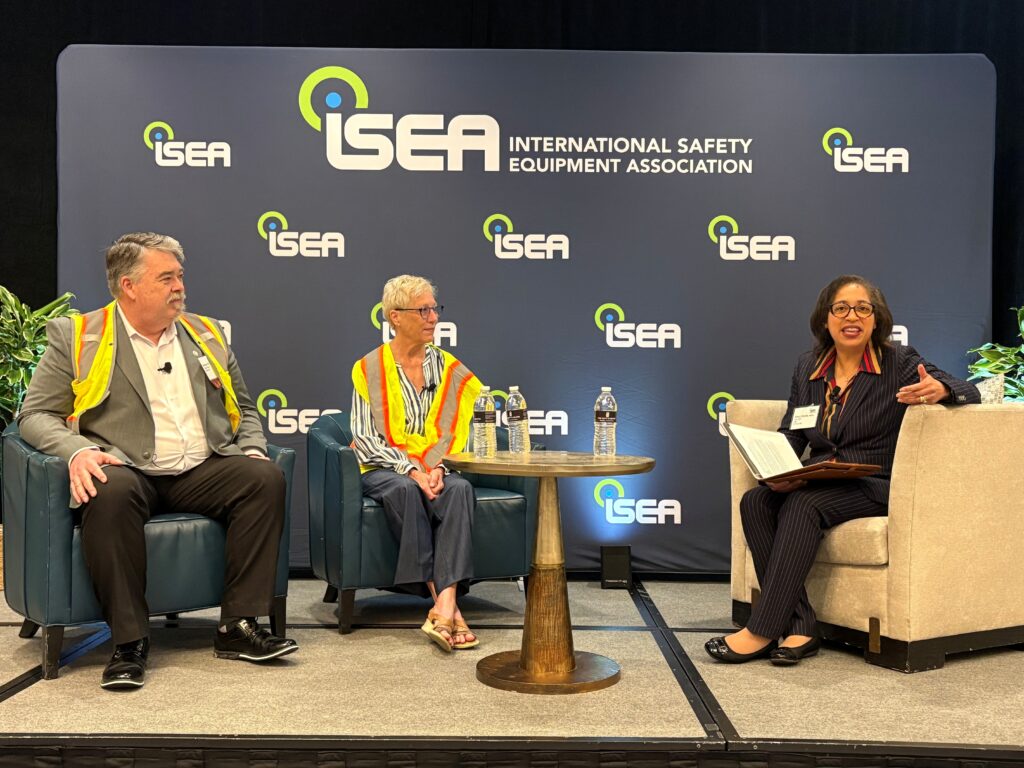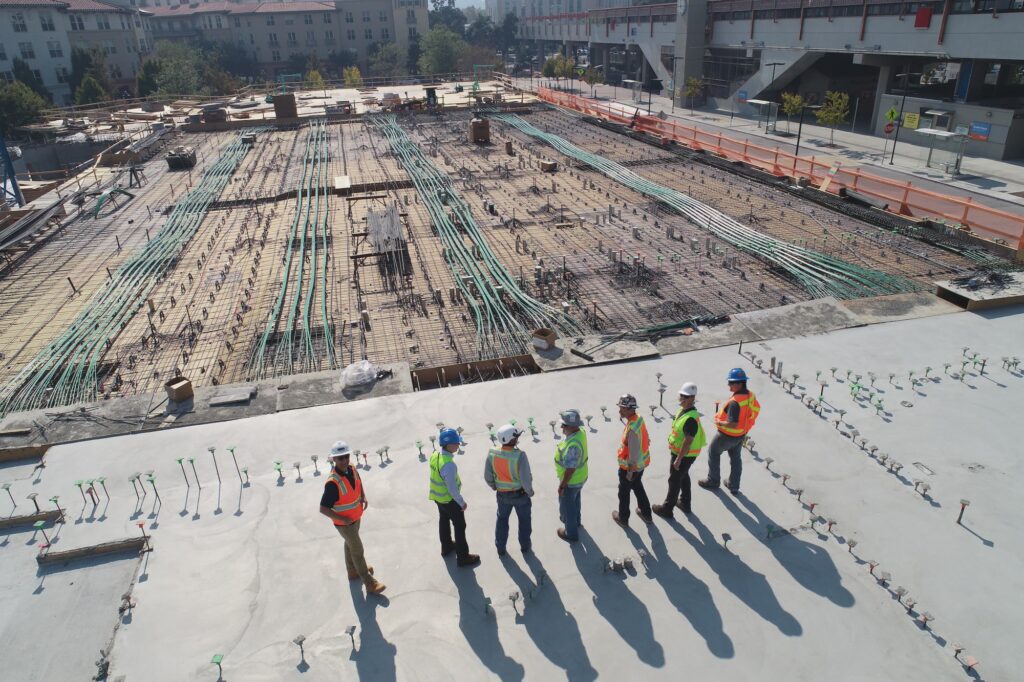Frontline Safety Professionals Share What Works—and What Doesn't—on Today’s Construction Sites
Panel moderated by Shari Franklin-Smith, CIH, CSP (3M)
Panelists: Stephen Kinn (Senior Safety Manager, Kwest Group) and Julie Carter, MS, CSP, CHST (Director of EHS, Roy Anderson Corp)
At the 2025 ISEA Executive Summit, the session that generated the most buzz wasn’t about policy or economics—it was a candid, boots-on-the-ground discussion with two safety leaders who manage some of the most demanding construction environments in the country. Moderated by Shari Franklin-Smith of 3M, the end user panel revealed hard truths, everyday challenges, and a resounding message: manufacturers need to get even closer to the field.
Supply Chain Breakdown: “I need it now—three weeks is too late.”
Panelists emphasized a major challenge: vendors aren’t stocking enough inventory, and lead times are too long for the fast-paced world of construction. Julie Carter didn’t mince words about the realities of PPE procurement on dynamic jobsites: “My project starts next week. I can’t wait three weeks for that first aid kit. I’ll find another vendor.”
Stephen Kinn echoed the frustration, citing how many suppliers have scaled back warehousing. “They’re doing just-in-time inventory now. It’s killing our ability to respond quickly in the field.”
Both panelists stressed that what may seem like a minor lead time issue on paper often means job delays or putting workers at risk.
Changing Standards, Training Fatigue: “Now I have to retrain 300 people… again.”
Kinn discussed the difficulty of retraining his workforce across 37 states every time labeling or classification changes—like the recent switch in fall protection SRL labeling from Class A/B to Class 1/2. “It’s not that I don’t get why it changed. I do. But now I have to retrain 300 people who were just trained under the old system.”
Carter emphasized the compounded challenge of communicating standards to workers with limited literacy or language barriers: “You can’t just hand them a manual and expect results. They need to hear it, see it, and trust that it matters.”
Their ask: clear, user-friendly education materials and training support that can be deployed at scale in the field.
Comfort, Culture, and Buy-In: “If they won’t wear it, it’s useless.”
PPE that isn’t worn can’t protect. That’s the reality both Carter and Kinn hammered home. “If they’ll wear it at home, they’ll wear it at work,” Carter noted, referencing the growing popularity of stylish safety eyewear and functional vests.
Kinn shared a story about hard hats, a symbol of pride and identity for many construction workers: “We tried switching to Type II helmets. Fifteen percent of our superintendents said, ‘If you make me wear that, I quit.’ That’s 200 years of experience I can’t afford to lose.”
They both agreed fashion, tradition, and personal connection matter. Carter recalled one worker who refused to give up his father’s hard hat; another wouldn’t trade in his gear because “I earned this.”
The takeaway? Change management is real. Workers need to be part of the decision-making process—what Carter called a “try it and buy it” model.
Real-World Feedback: “Don’t upsell me safety.”
Panelists criticized upselling life-saving features—like harness rescue straps—as optional add-ons. “Don’t tell me it’s essential and then charge me more. That doesn’t build trust,” said Kinn.
Carter emphasized that meaningful product development comes from real-world input, not just engineers in offices: “Manufacturers that actually engage with us and try things with end users are the ones getting it right.”
They called on manufacturers to partner more intentionally with jobsite trainers and union halls for hands-on demos, feedback loops, and field-driven product evolution.
Culture Over Compliance: “They don’t forget to wear PPE to be difficult—they’re distracted.”
Shari Franklin-Smith asked how to drive stronger day-to-day compliance. The answer: it’s not about rules—it’s about connection.
Kinn shared: “We have to understand that workers are distracted. They’re worried about their kids, their rent, a broken lawnmower—not safety glasses. Our job is to care enough to ask why, not just issue a write-up.”
Carter added: “You can’t run safety from behind a desk. You have to be out there, engaging workers, showing them you care.”
Technology & Wearables: “Great ideas—but not always jobsite friendly.”
While intrigued by AI and smart wearables, both panelists noted that some tools don’t translate well to construction. “Wrist monitors aren’t going to fly with my crews,” said Carter. “They see that as surveillance, not support.”
Instead, low-tech solutions like electrolyte popsicles and shaded rest tents have proven more effective than some cooling vests, which workers often find too heavy or complex.
Still, both see promise in AI-backed data analysis and creative innovations—like a solar-powered hard hat fan invented by one of Kinn’s employees.
Final Takeaway: Design With, Not For
Carter and Kinn reminded manufacturers that safety success isn’t just about specs—it’s about worker trust, practical deployment, and cultural acceptance.
As Carter put it: “Safety is about people. If they don’t trust it, don’t like it, or don’t understand it, they won’t use it.”
Kinn added: “We want to keep our workers safe and keep them with us. If it means giving them a voice in their gear, that’s what we’ll do.”
The message to ISEA members was clear: Engage earlier, listen deeper, and partner often—because PPE only works when it works for the people wearing it.


